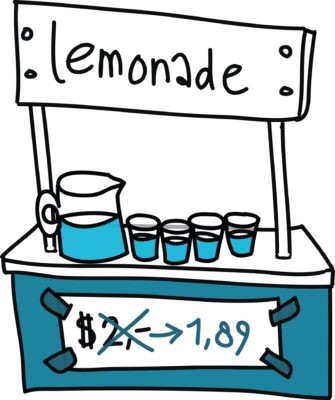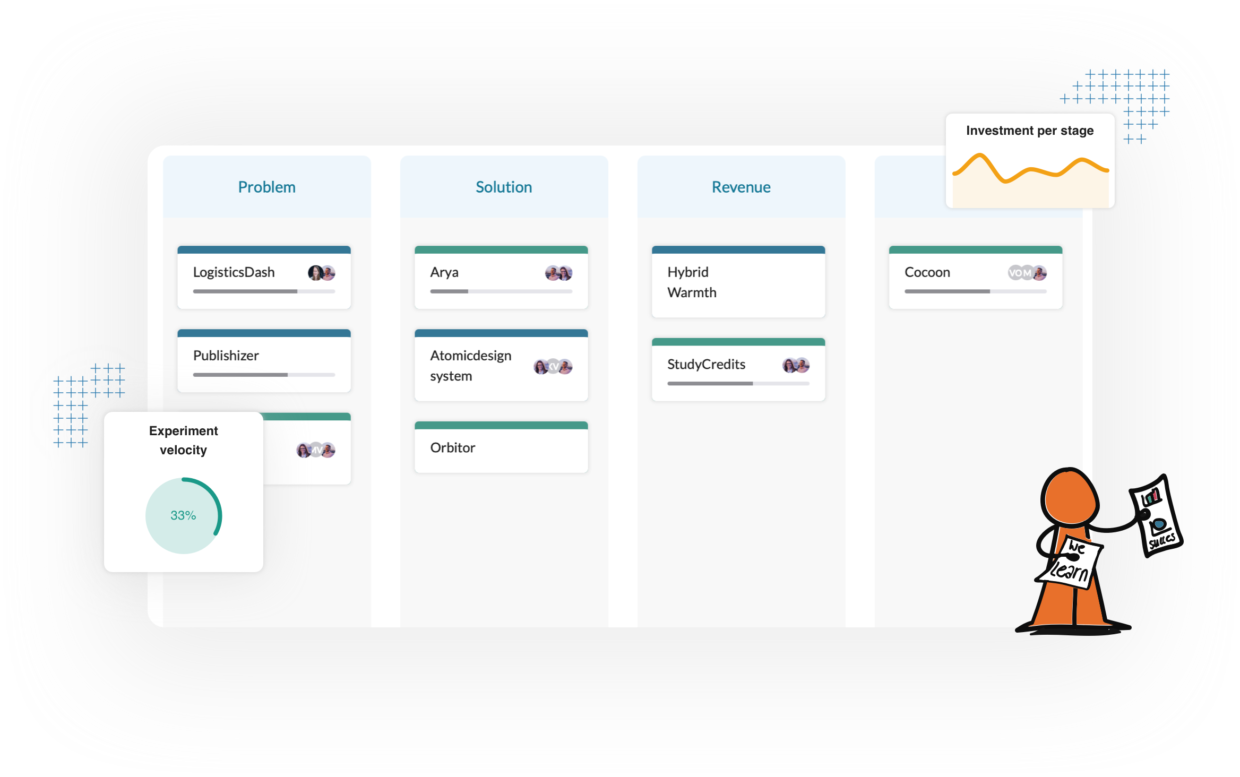Two pricing experiments to discover the perfect price
Table of Contents

To find out if and what your customer is willing to pay for your product, we run pricing experiments. In this blog, we describe a couple of Lean Innovation experiments that we have used ourselves during the validation of business models. An excellent way to test a revenue model without having your final solution ready is via a Dry Wallet. You create a fake checkout process and offer your product or service for free at the end of it via your Concierge model or Wizard of Oz experiment.
When you are a bit further with the development of your solution and already have a functioning solution, you could use a Price Elasticity Survey to learn what the upper and lower boundaries are for your pricing model.
Dry Wallet experiment
A Dry Wallet or Fake Checkout experiment tests whether your potential customers are willing to pay for your solution by creating a fake checkout process and offering your Concierge model solution or Wizard of Oz experiment to them for free.
Helps answer
- Is your potential customer willing to pay for your solution
- Does pricing or payment options influence your conversion rate
How to
Instead of building a complicated checkout process with credit card integration or pay by invoice system, create a form where customers can leave their billing information and add a price, and a checkout button.
Measure how many people visit the Checkout page, fill in the form, and click on your Checkout button.
You can experiment with different payment methods and prices to see if that significantly affects your conversion rate.
Price Elasticity Survey
Do you have a clear understanding of what price you can charge for your solution? Most start-ups spent up to 45 minutes on their pricing. Once. We do it differently, we run multiple pricing experiments throughout our startup journey, to make sure we have the correct pricing, because the price people are willing to pay may change over time.
Your pricing is a super important tool to drive growth. It is easier to increase your price by 10% than to acquire 10% more users. But what is the range your pricing should be in? You find out by asking your customers.
Your customers aren’t very good at thinking about specific price points, though. They won’t be able to tell you if your solution is worth 199 euro per month or 279 euro.
The Price Elasticity Survey can help you find the answers.
[convertkit form=2570335]
It helps answer
- What is the lower and upper limit of your pricing plans
- What are the core features your customers are willing to pay for
- What types of pricing plans could you create to serve your customers best
How to
The Van Westendorp’s Price Sensitivity Meter is behind the Price Elasticity Survey and is developed to determine the pricing landscape for your solution. It is based on four key questions about your pricing:
- At what price would you consider the product to be so expensive that you would not consider buying it?
(Too expensive) - At what price would you consider the product to be priced so low that you would feel the quality couldn’t be very good?
(Too cheap) - At what price would you consider the product starting to get expensive so that it is not out of the question, but you would have to give some thought to buying it?
(Expensive/High Side) - At what price would you consider the product to be a bargain—a great buy for the money?
(Cheap/Good Value)
By creating a survey and sending these questions to your current and potential customers, you can determine certain price points. The optimal price is somewhere between Too Cheap and Cheap / Good Value.
You start with a price on the low end of the range and increase it when adding new features.
Later, in your scale phase, you can start experimenting with raising the price towards the Cheap / Good Value limit and seeing where the best pricing is compared to the number of new customers you can acquire.
When you analyze your survey, split up the results based on the different customer segments you have to determine if price elasticity is different between different customer segments. It can be that one segment is willing to pay much more for the full set of features that you want to offer, and another customer segment is only interested in a subset and has less budget. By analyzing these differences, you can create different pricing plans that fit your identified customer segments.
It’s time to run your own price experiments
Now you know how to run price experiments that help you find out if your customer is willing to pay for you solution, and what price you could charge for it. It’s time to get out in the field and test!

Timan Rebel has over 20 years of experience as a startup founder and helps both independent and corporate startups find product/market fit. He has coached over 250+ startups in the past 12 years and is an expert in Lean Innovation and experiment design.
